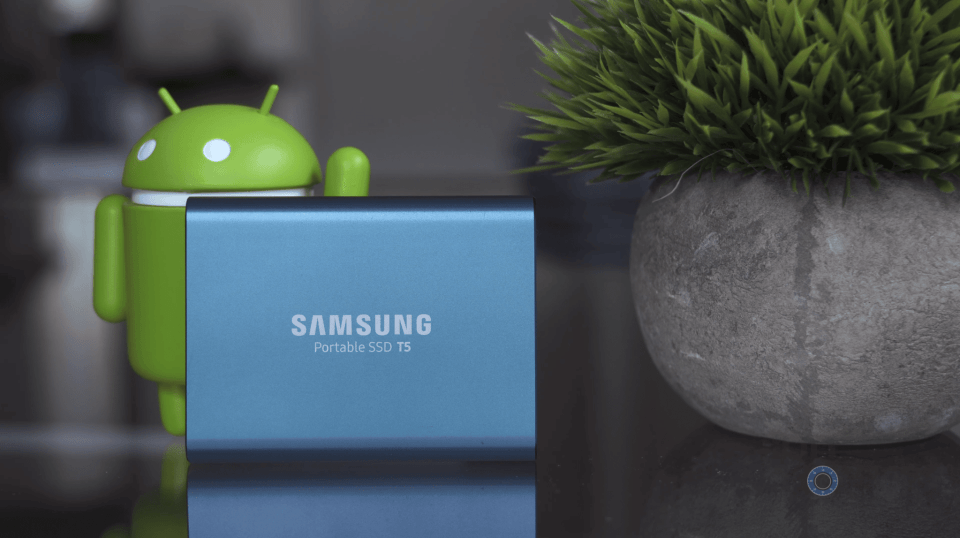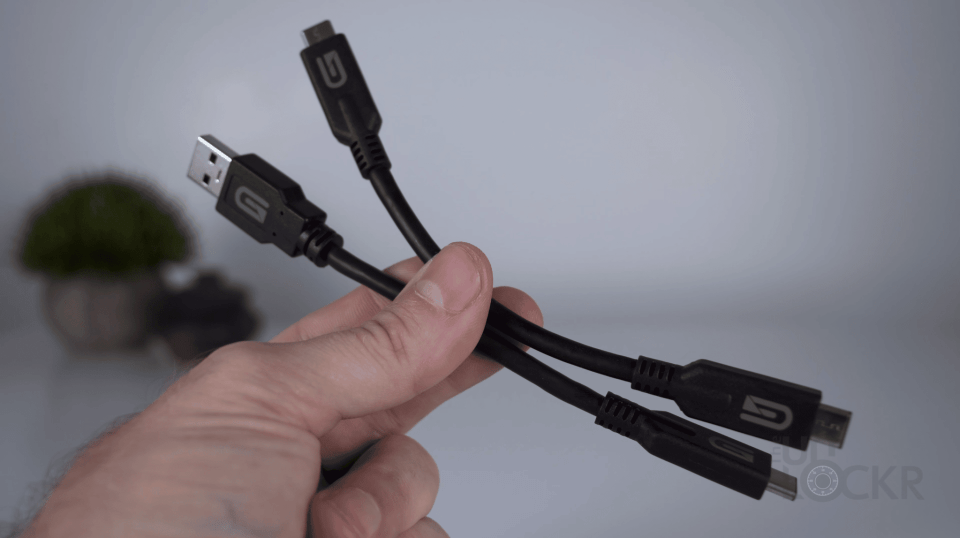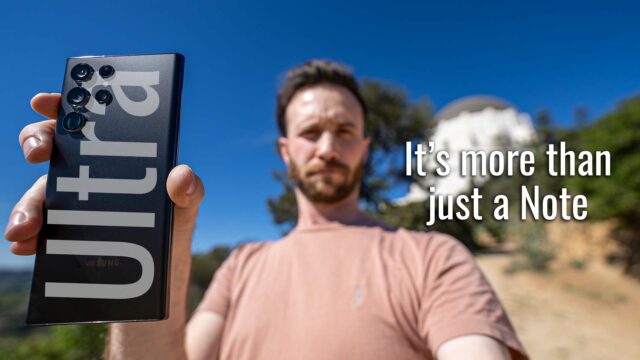4 Best External SSDs for 4K Video Editing (Video)
It’s a good time to be a video creator. There are amazing cameras and phones that all shoot 4K and are a lot more affordable than ever before allowing us to produce much higher quality content without the need for a crazy feature film budgets.
The issue with this 4K high-quality content, though? It’s huge.
Now, most creators end up reaching for an external hard drive to be able to offload their footage from their precious computer hard drive. The thing is, there are a lot out there and they are definitely not created equally. B&H was kind enough to let me wander their store in search of the best hard drive for 4K video editing and I managed to narrow it down to my top 4.
Now, for me, there are some pretty specific criteria for this.
- I travel a lot, like a lot of video creators I imagine, and also need to be able to offload the camera footage on set/where ever I am shooting so a portable hard drive is a must.
- For one of these drives to be truly convenient for video editing, I need to be able to have the option to edit the footage directly from the drive. I don’t want to have to copy it over to my computer, edit, render, delete footage, etc. Just plug it in, edit directly from it as a scratch drive, and unplug when done.
- I wanted something with USB 3.1 Gen 2 Type-C, the fastest USB tech out right now, to future proof it for any Mac or Windows PC coming out.
- Durability, price, and all the other obvious criteria were also considered.
Samsung T5 SSD
First up, the new Samsung T5 SSD. Now supporting USB 3.1 Gen 2, it has theoretical speeds of up to 540mb/s.
Now, if you have a newer MacBook Pro you have USB-C Thunderbolt 3 ports that double as USB 3.1 Gen2 ports as well so that computer or any other laptop that has those ports will get close to the theoretical speeds listed, but I’m going to test them using the lowest common denominator of USB 3.0 that I can guarantee everyone has on their computer and you can just assume that’s the slowest speed you’ll ever get.
So for the T5, I averaged around 320mb/s in real-world testing. I was using my USB 3.0 Type-C port on my Razer Blade to get those speeds but, that was plenty for me to still be able to use it for 4.6K footage in Premiere without any hiccups.
And, again, if you have USB 3.1 Gen 2, you’ll get closer to that 540mb/s speed.
Besides the performance though, it is also laughably small. When it arrived and I first opened it, I literally laughed in surprise at how tiny it was. Picking it up caused a second laugh as it’s also a lot lighter than it looks.
Now, I personally love the blue color even though it only is available for the 250GB and 500GB but the metal body that all the models have is a nice modern aesthetic that I appreciate–who says drives can’t look good?
In the box, it includes a USB-C to USB-C cable as well as a USB-C to USB-A cable which means it’ll work with any laptop you have.
And, finally, it’s not crazy expensive for an editing scratch drive. The 250GB starts around $130, the 500GB is about $200, the 1TB is about $400 and the 2TB is about $800.
Glyph Atom RAID SSD
Next up, we have a drive on this list from a company you may or may not be familiar with: the Atom RAID SSD from Glyph Technologies.
Also, a decent looker, it’s small and compact with a rubberized casing and metallic frame (seriously love that companies are trying to make hard drives look better).
It is also a USB Type-C SSD that comes with both the Type-C and Type-C to Type-A cables and as a bonus, it’s Thunderbolt 3 compatible.
Thanks in part to that Thunderbolt compatibility and the fact it has two SSDs in RAID 0 format it can do theoretical speeds of up to 800mb/s which is insane.
Now, again to hit the top of these speeds, you’ll need to have Thunderbolt 3 as it’s faster than USB 3.1 Gen2 and then if you had USB 3.1 Gen 2 would give you the close to 540mbps speed like the T5.
For me using my USB 3.0 port, I saw about 420mbps in a real-world copying of a file to the drive.
That speed though is plenty for me to use it to edit my 4K footage in Premiere without having to move the footage off of the drive and if you end up moving to a laptop with any of those mentioned ports, this drive like the others will only get faster.
Pricing for the Atom is a little more expensive than the T5 (thanks to that Thunderbolt Compatibility) and I couldn’t find anything that wasn’t 1 or 2 TB so those seem to be the only options. The 1TB is about $460 and the 2TB is about $820.
Check it out at B&H.
Check it out on Amazon.
SanDisk Extreme 900 SSD
The next one isn’t as pretty as the first two but comes from a name I think most people will recognize in the world of storage: SanDisk.
SanDisk’s Extreme 900 SSD is technically the fastest drive, at least on paper, on this list, but again for that, you’d need that USB 3.1 Gen 2 Type-C port, etc. but even without it, it has similar actual speeds in my test of about 420mbps–still plenty fast.
While it is also the largest SSD on this list, it’s still pretty tiny and definitely portable and also includes both the USB-A and C cables.
The Sandisk comes in 3 options that I could find, a 480GB for $300 or so, a 960GB for $460 or so, and a 1.92TB for $740 making it also one of the cheaper options for the top two sizes (while not quite as competitive as the others on the lower end).
Check it out at B&H.
Check it out on Amazon.
Western Digital
Another household storage name brings the cheapest option available on this list: Western Digital.
Starting at just about $100 for the 256GB model, it’s about $200 for the 512GB version and $360 for the 1TB version, it’s undercutting the rest by a bit.
The drive is super tiny, but albeit a bit cheap feeling, and instead of including two separate cables it just has a USB Type-C adapter for the cable.
It also supports USB 3.1 Gen 2 like the rest and can do theoretical speeds of about 515mb/s with my actual speeds I saw using the port mentioned of about 300mb/s. And for the price, is definitely a good deal.
Check it out at B&H.
Check it out on Amazon.
Conclusion
Now, with all of these the USB 3.1 Gen 3 Type-C means broader compatibility across Mac and Windows using USB 3.0 or Thunderbolt Type-C ports for now, but also means that it’s future proofed a bit for the next line of laptops that’ll all be sporting USB 3.1 Gen 2 ports eventually.
Even without that they were all still super fast, handled my 4K and even 4.6K footage editing directing from the drives, and are all tiny and light enough to carry around all day without even noticing they’re there.
I personally think the Samsung is the craziest one here in terms of speed to size. It’s seriously tiny and light and looks nice next to my metal laptops while also being priced sort of right in the middle.
The WD is a great option if you’re on a strict budget, but of course, you’d be good to edit off any of these on this list using Mac or Windows without any issues and not need to replace them for a long time.
Let me know what other portable drives you guys like that I might have missed in the comments below, I’d love to hear about it and I’m sure that others would as well!
































If you’re shooting 4K, you will need much more space than the drives you’ve listed here provide. And the “cheap” WD for $360 for only 1TB version is actually very expensive.